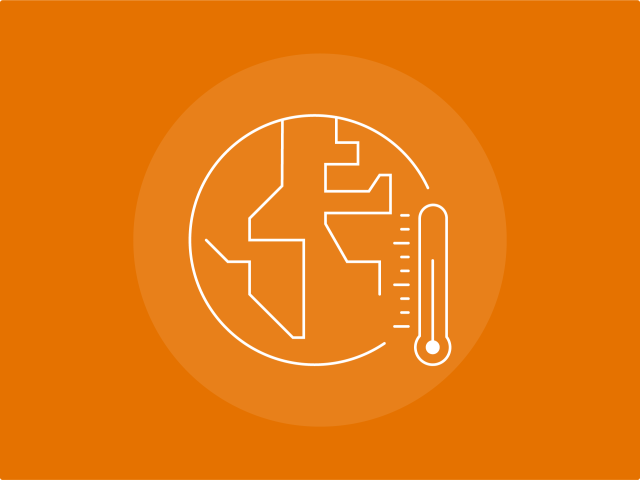

 Article
Article

 The U.N.’s report on climate change reflects a more dire situation than the world may have anticipated in the 2015 Paris Agreement. We need multistakeholder action — across industries — including government policies and the private sector’s commercialization of clean technologies. Here, Darden experts delve into practical action companies can take.
The U.N.’s report on climate change reflects a more dire situation than the world may have anticipated in the 2015 Paris Agreement. We need multistakeholder action — across industries — including government policies and the private sector’s commercialization of clean technologies. Here, Darden experts delve into practical action companies can take.

The United Nations’ Intergovernmental Panel on Climate Change (IPCC) recently released the Working Group II contribution to the Sixth Assessment Report, which evaluates the impacts of climate change on ecosystems, biodiversity, and communities on regional and global scales. Here are a few staggering headlines from that report1 :
There is no time to waste. We have missed the window to avoid all the climate-related impacts predicted by scientists. We are already witnessing climate stresses. Even if we are successful in limiting warming to 1.5 degrees Celsius as prescribed in the Paris Agreement of 2015, the IPCC says that the health and livelihoods of North Americans will be severely impacted. Under even the most optimistic scenarios, we will likely need to adopt adaptation measures to protect vulnerable topographies — for example, erecting sea walls around cities like New York. The U.S. economy will be further affected by impacts felt in other parts of the world that disrupt supply chains and drive mass migrations of people leaving affected areas.
Yet, as the need to adapt to our new climate reality increases, the fundamental imperative to mitigate global greenhouse emissions remains. With every degree increase due to global warming, the economic impact of climate change will rise disproportionally higher. Some researchers suggest that annual losses will increase by approximately 0.6 percent GDP per 1 degree Celsius at +1 degree Celsius of Global Mean Surface Temperature (GMST) warming (relative to 1981–2010) to 1.7 percent GDP per 1 degree Celsius at +5 degrees Celsius GMST warming.2
We need investment and widespread adoption of cleaner technologies that shift our economy away from fossil fuels and toward net-zero emissions. To do so will require multistakeholder action across virtually all industry sectors if we have any hope of slowing climate change. This includes not only aggressive government policies to facilitate market shifts, but also the active efforts of the private sector to speed and scale the commercialization of clean technologies.
The good news is that clean technology innovation is happening in every major industry sector. We take a close look at the technologies and practices that hold the most promise for decarbonization in our book, The Decarbonization Imperative: Transforming the Global Economy by 2050. Electric vehicles, renewables and net-zero buildings are well-positioned to scale quickly with minimal investment in developing the technologies themselves. Much of the focus in these industries is on infrastructure and financing.
For industrials and agriculture, the challenge is far greater, with significant investments still needed in basic R&D. To address these sectors, it’s looking more likely that we will need carbon capture and storage (CCS) solutions to abate carbon emissions. Yet, CCS technologies are early in their own commercialization cycles, and without financial incentives to adopt and to scale production, deployment will likely be slow. One thing is clear: Across all industries, we will need an active private sector to move the needle on climate change.
Companies today are feeling the pressure to act on climate from governments, investors, customers and their own employees. Long gone are the days of annual sustainability reports being sufficient to satiate stakeholders. Firms are expected to take a public stand on many social impact issues, including climate. Here are just a few ways that companies can be effective climate influencers:
We are quickly approaching an era in which leading on climate change is no longer an opportunity to differentiate, but rather a requirement for doing business. In Larry Fink’s words: “Every company and every industry will be transformed by the transition to a net-zero world. The question is, will you lead, or will you be led?”
This article was developed with the support of Darden's Business Innovation and Climate Change Initiative, at which Michael Lenox is faculty director and Rebecca Duff is senior researcher. The two co-authored The Decarbonization Imperative: Transforming the Global Economy by 2050.
Lenox’s expertise is in the domain of technology strategy and policy. He studies the role of innovation in helping a business succeed. In particular, he explores the sourcing of external knowledge by firms and this practice’s impact on a company’s innovation strategy. Lenox has a longstanding interest in the interface between business strategy and public policy as it relates to the natural environment; his work explores firm strategies and nontraditional public policies that have the potential to drive green innovation and entrepreneurship.
In 2013, Lenox co-authored The Strategist’s Toolkit with Darden Professor Jared Harris. His latest book,
Lenox is a prolific author; his most recent book, Strategy in the Digital Age: Mastering Digital Transformation, examines how digital technologies and services enable the creation of innovative products and services, as well as identifying new competitive positions.
B.S., M.S., University of Virginia; Ph.D., Massachusetts Institute of Technology
Climate Change: The Window Is Closing to Take Action
Share